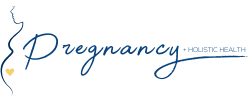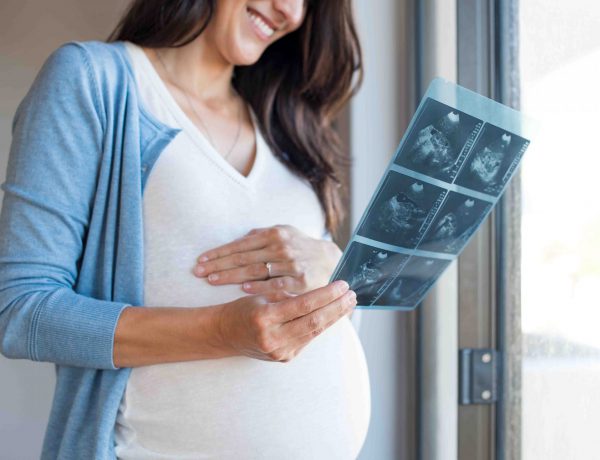Did you wake up one morning and discover that it suddenly hurts to walk? You’re not alone. A whopping 32.1% of pregnant people experience hip pain during pregnancy. Unfortunately, hip pain during pregnancy is a common issue that plagues many mothers-to-be. In this article, you will discover why hip pain occurs during pregnancy, when it may be serious, and some natural ways to alleviate it.
Why does hip pain happen?
There are a couple of factors of play that cause hip pain during pregnancy. Pregnancy causes many normal changes to your body. Factors include:
- Weight gain
- Poor posture
- Hormonal changes
While hip pain during early pregnancy is possible, it is more likely to occur during the second and third trimesters. Women of average weight are encouraged to gain 25 to 35 pounds for a healthy pregnancy. As one’s weight increases, their center of balance is pulled out of alignment, which may affect posture.
Towards the end of pregnancy, your body begins to prepare for birth. Relaxin is the hormone during pregnancy that causes the joints to become lax. The sacroiliac joints typically bear weight. As the joints loosen, the hips become painful.
As these factors combine, it creates the perfect storm for hip pain during pregnancy.
Thankfully, there are natural ways to alleviate the discomfort you may be feeling.
Pregnancy pillows are useful when placed between the legs. Using at least two pillows slightly opens one’s hips, which places them in a position that minimizes stress on your hip joints. There are also specially designed pregnancy pillows that fit around a pregnant belly, back, hips, and legs during sleep. These pillows adapt to your shape and alleviate pelvic, hip, and back pain.
BUY NOW: THE MOTHER OF ALL PREGNANCY PILLOWS FROM SCANDIBORN

Prenatal yoga is beneficial for decreasing pregnancy symptoms. Studies show that yoga may not diminish pain, but it will improve one’s overall well-being. To receive the benefits, you should go at least weekly. Some go more frequently.
Prenatal massage decreases muscle soreness. By all means, use this as an excuse to hit your favorite spa! However, there are even more benefits after a soothing massage from your partner! Massage therapy decreases pain, lessens symptoms of depression, and improves the pre-baby relationship between the two of you.
The Transcutaneous electronic nerve stimulation (TENS) unit is a device that releases electrical impulses down the lengths of nerves by way of small electrodes. The use of the TENS unit during pregnancy is controversial to many. From a legal standpoint, many discourage its use. However, it is generally considered safe as long as one does not place it on the belly or pelvic area.
BUY NOW ON AMAZON: iReliev Pain Relief & Recovery TENS + EMS Machine
Acupuncture is not necessarily supported by data, but it does not have any problematic effects on pregnant women. In a study where acupuncture sessions were administered over six weeks, they found that the addition to pregnancy may be beneficial, and there were no harmful effects to either mom or baby.
Chiropractic care benefits pregnant women is usually a safe, effective practice during pregnancy. Chiropractors can decrease muscle pain in your hips or joint misalignment. To make sure that your chiropractor is safe for pregnancy, you should make sure they are Webster-certified. This may stabilize your pelvis and possibly even improve your speed of labor!
Pelvic floor physical therapy (PT) has proven benefits on pelvic pain during the pregnancy and postpartum period. Pelvic floor rehabilitation will also decrease urinary incontinence, urinary urgency or frequency, and pelvic floor discomfort. And real talk- even if it does not help with pregnancy hip pain, it improves sexual function and orgasm.
BUY NOW ON AMAZON: Serola Sacroiliac Belt
Maternity support belts are tremendously helpful when it comes to hip or back pain. The sacroiliac joint (SI) belt works by compressing and supporting your hips. Studies demonstrate that a support belt lessens the pain experienced by a pregnant woman. It stabilizes your hips and removes some of the stress that your baby may be placing on your hips.
Osteopathic manipulation therapy (OMT) is a hands-on technique performed by osteopathic physicians (DOs) to treat hip pain and reduce the risk of injury. DOs are trained in the musculoskeletal system, and OMT has been proven to improve symptoms in pregnant people. The ease typically lasts for about two weeks until the painful symptoms return. Some DOs are willing to train partners in the OMT method to allow more frequent relief, so be sure to ask!
What are the potential signs of something more serious?
Make sure that it is simple hip pain and not preterm labor contractions. Hip pain usually hurts worse with activity. You should not feel your belly tighten while experiencing hip pain. If you can time the pain or your abdomen gets hard during it, contact your OB provider immediately.
Unfortunately, hip pain during pregnancy is standard. However, if the pain begins to interfere with your quality of life or ability to perform regular activities, speak to a healthcare provider. As a Nurse-Midwife, I have ordered walkers and wheelchairs for clients who require them.
Conclusion
While it may be normal to experience hip pain during pregnancy, there are ways to become more comfortable. The wonderful part about these discomforts is that hip pain is part of growing your beautiful baby.
These include:
- Pregnancy pillows
- Maternity support belts
- Yoga
- Stretches
- TENS unit
- Massage
- Acupuncture
- Webster-certified chiropractor
- Pelvic floor PT
- Osteopathic manipulation therapy (OMT)
It is perfectly reasonable to feel frustrated with the process, but now you have tools in your toolbox to improve your current situation. If it still hurts to walk after trying these methods, contact your doctor or midwife for further assistance.
NOTE: Some of the links in this post might be affiliate links. This means that if you click on the link and make a purchase, we’ll receive a small commission – at no extra cost for you, which helps us cover the costs for the blog.
This article is not intended to be a substitute for professional medical advice, diagnosis, or treatment. Always seek the advice of your physician or other qualified health provider with any questions you may have regarding a medical condition. Never disregard professional medical advice or delay in seeking it because of something you have read on this website.
READ MORE
Your Biggest Pregnancy Ultrasound Fears (and How They Stack Up Against Reality)
I remember my first pregnancy ultrasound like it happened yesterday. There I was, sitting…
November 24, 2020Does COVID-19 Encourage Pregnant Families to Birth at Home?
For many pregnant families, COVID-19 adds an element of fear to birthing in a…
July 12, 2020A Pregnancy Self-Care Routine Every Mama Should Incorporate
Fuel your body, mind, and spirit throughout pregnancy by following these steps and creating…
June 30, 2020Hip Pain During Pregnancy: Natural Ways to Relieve Discomfort
Did you wake up one morning and discover that it suddenly hurts to walk?…
June 23, 2020Is CBD Safe To Use During Pregnancy?
There’s no doubt about it – pregnancies are stressful. For expectant mothers who are…
June 17, 2020What If You Have An Unsupportive Partner During Pregnancy?
You’re pregnant, and you’re preparing for your entire life to change. Whether you just…
June 6, 2020







